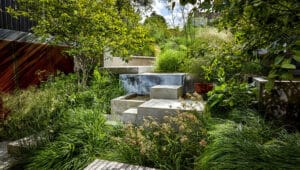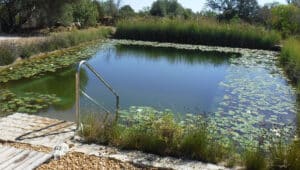By: STUART MERELIE
Stuart Merelie, landscaper, ecological researcher and permaculture fanatic, shares his passion for correct and sustainable landscaping in the Algarve and is our permanent garden and landscaping correspondent. This week is the ninth part in a series of 24 exploring Permaculture and its importance and uses in today’s world.
BUILDING A house can be one of the most traumatic events in people’s lives.
The process is often a struggle among the owners to get the biggest house they can get for the least amount of money. In the end, there is the inevitable gap between the estimate and what the project actually ends up costing.
People actually believe that once the gin palace is built, their life will be drastically improved. In many ways, our modern lives have become disconnected from the things that really matter and have genuine value. No longer a sensible shelter that has a degree of harmony with the natural world, the modern home has become something else.
The modern home takes the world’s goods and converts them into garbage, sewage and noxious fumes, something that we have yet to find a use for. Waste and large utility bills, hardly sustainable, is it?
There is another way – a home sized to meet genuine needs, built by the hands and inspired by the dreams of those who inhabit it – is much more likely to contain a richness of soul and spirit. Oh and cost a proverbial shed load less to heat and light it. I was off to find this house!
 Details of window |
Pig jokes
I travelled to Tábua, to the east of Coimbra to meet Chris Ripley. After years of travelling through India and China, Chris decided to plant his feet in Portugal. After completing a straw house course in the United States, he acquired a small ruin on two hectares of land, complete with well and year round running stream.
Chris went to the local câmara. Straw bale houses are not that common in Southern Europe and he was given a piece of advice. Register the size of the ruin, ensure the deeds are up to date and get on with it. Right or wrong advice, he will not know until the house is finished, but he has an architect on board and takes photos of every stage. And yes, he has suffered every version of three little pig jokes on offer. The main construction is complete and he hopes to have all complete by the spring.
Quinta Melros is tucked in a small valley, a couple of minutes out of the local village and nests quietly into the countryside, lost if you are one minute away. It is built on a foundation of concrete-filled used car tyres and sits on a wooden box. Unlike many other straw bale houses, Melros does not have a timber frame but relies on the strength of straw bales joined with hazel poles – impressive when it is two storeys high and supports a strong tiled roof.
The use of the overhanging porch keeps the summer sun out but allows the lower angles of the sun’s winter rays to warm the bales in the winter, the large thermal mass releases heat slowly in the colder hours of the night – free central heating anyone?
Building with straw is a method of construction that, in the US, dates back to the 1890s when Nebraska settlers on treeless plains used bales of straw to build sturdy homes. It is now a small but growing movement to bring back what proponents say is a remarkably energy-efficient and earth-friendly way of building. Using bales in building has two advantages: it is a sustainable use of a waste product that might otherwise end up disposed of in environmentally-unfriendly ways, and the thick walls it creates are terrific energy savers.
It took less than 300 bales of straw to build this house – at three euros a bale, not exactly a fortune. The outside will be rendered in a traditional lime putty. This has been made up several months ago as it must sit for six to 12 months in an airtight vat to mature (how different to cement, eh?) and will be plastered in October – the summer is too hot and the lime must not dry too quickly.
With a compost toilet, a couple of solar panels, a permanent free water supply and an impressive rambling forest garden full of fruit trees and vegetables, Chris is well on his way to the perfect home. Sitting on his patio with a glass of wine, listening to his impressive performance on guitar, watching the stars, I realise there are no street lights, no noise, I think he has a big slice of Utopia. I’m jealous.
With 24 years experience in garden design and construction, Stuart is resident landscaper for QM Garden Centre. With his new company Merelie, The Landscapers, he is available for design and construction of all types of sustainable landscaping as well as consultations on permaculture projects including swale orchards, meadow gardens, rainwater harvesting, composting and is author of The Twelve Month Harvest. He offers free help and advice on compost heaps and compost toilets. Stuart lives near Estoi on his farm.
For inquiries please contact Stuart on 917 814 261 or email on stuartmerelie@gmail.com
























